BRUNSWICK — Anna Agell pulls out a sheaf of notes on the monarch butterflies she’s raised already this year. There was Rudolf Nureyev, so named because her daughter’s cast-off pink ballet tights were draped over the container where he transitioned from caterpillar to chrysalis to butterfly. Then there was Minnie, found as an inch-long caterpillar on July 20, and Brutus, who spent only two days in Agell’s home in Brunswick before moving into his chrysalis form. Agell has coaxed 15 monarchs along, from egg to caterpillar to flight so far in the summer of 2018, “considerably more than I have ever found before,” she said.
She needed the names just to keep her tenants straight. Some have already flown the coop. Others are munching milkweed – the plant monarchs are utterly dependent on – in the containers she’s provided for them. Some are hanging upside down, looking like bright green Silly Putty and will likely be butterflies before you read this. Walking around in her yard, she flipped over a milkweed leaf and found another egg almost immediately.
Agell has company, both in her interest in monarchs and her sense that this is a banner year for the butterflies. Mainers are reporting many sightings of monarchs – mature butterflies and otherwise – in their fields and gardens this summer. Scroll through Instagram and Facebook, and the elation is evident in every post featuring flowers and the bright orange pollinators. “We have seen far more this year than we have in the past,” said Gail VanWart of Peaked Mountain Farm and Native Pollinator Sanctuary in Dedham.
These sightings beg the question, is this a sign of recovery for the much-loved pollinator, known for its epic migration of 3,000 miles to the mountains of Mexico, where the species overwinters? Are the steps that people like VanWart and Agell are taking helping the species, now under review for a possible listing as a threatened species by the U.S. Department of Fish and Wildlife? Or is this just a blip?
The answer, says Ron Butler, a professor of ecology at the University of Maine at Farmington and the head of the Maine Butterfly Survey, is not a simple one. For one thing, there is greater awareness of the plight of the species. In 2014, the late Lincoln Brower, then the foremost expert on monarchs, along with the Xerces Society, the Center for Biological Diversity and the Center for Food Safety, petitioned the U.S. government to list monarchs as threatened. A decision is expected in 2019. The publicity given to the plight of the orange, black and white butterflies may have raised awareness, and thus increased sightings. In other words, maybe more people are simply noticing the ones that are here.
Plus, periodic fluctuations are typical for most species of insects.
“In some years there were large numbers and in other years very few,” Butler wrote in an email. “Environmental factors such as rainfall, temperature regimes, food availability and population cycle of predators, parasites and competitors can have dramatic impacts on insect reproductive output and offspring survival in any single breeding season.”
What’s important to remember, Butler said, is that the situation for monarchs “is still very much dire.” The overall population trend remains on a steep downward slope, he said. Between the winter of 1996-1997 and that of 2014-2015, scientists say the eastern U.S. monarch population declined 84 percent.

Agell at her home in Brunswick last month. Agell has become a mother of sorts to monarchs in their various stages.
Thus this year is likely just a blip.
“They can rebound pretty quickly when the conditions are good,” said Phillip deMaynadier. a wildlife biologist with the Maine Department of Inland Fisheries and Wildlife. That includes springs and summers that aren’t too dry.
THE MILKWEED MUST
Various factors are at play in the continuing overall decline, including climate change and the extreme weather it brings about. Like the sudden freeze that decimated the overwintering monarch population in central Mexico in 2013, for instance. Habitat loss is an issue, from logging in the Mexican forests to new developments springing up along their path from Texas up the East Coast. Herbicides and insecticides affect the butterflies (some sprays targeted at mosquitoes also kill monarch larvae). Some scientists even believe a large number of monarchs die after colliding with cars on their journeys north and south.
The availability of milkweed is also crucial to the survival of monarchs. While the butterflies do nourish themselves on the nectar found in milkweed flowers, they can also take nectar from other flowers. But monarchs lay their eggs in milkweed and milkweed only. That’s because in its tiniest caterpillar form – called an “instar” – this insect has to eat milkweed leaves. Nothing else will do. In laying its eggs on the milkweed plant, the butterfly is establishing a nursery for its offspring. But for some farmers and landowners, that butterfly nursery is just a weed that needs eradicating.
Maine is on the northern end of the species’ range in North America, which extends into Canada. Multiple generations of monarchs are born in Maine each summer, although the precise number of how many can vary, according to deMaynadier. It could be as few as two, after a dry spring when the milkweed doesn’t thrive, and maybe three in a good year for milkweed, he said.
Except for a small population that deMaynadier said remains in Florida year round, monarchs east of the Rockies migrate to a mountain range in central Mexico, where they congregate in oyamel fir forests and overwinter. The monarchs that typically show up in Maine in June or July didn’t fly here from Mexico. They are the offspring of butterflies that left Mexico and likely started their breeding cycles in Texas, but they have traveled a long distance, either from mid-Atlantic states or southern New England. That’s why the early butterflies of June might look tattered; they’re showing their mileage.
At every step of the journey, monarchs need milkweed. There are 30 species of milkweed in North America, but deMaynadier said in Maine we have just a few, mainly common milkweed and swamp milkweed. In instar form, the future butterflies chew through many leaves, going through five progressively bigger instar stages before spinning a hook and creating a chrysalis to keep them safe for the nine to 14 days it takes for them to emerge as a butterfly.

Agell holds up the lid on one of her larval enclosures to get a better view of the chrysalis hanging from the top.
That’s the biggest reward for Agell, who gives them a few hours for their wings to harden off before releasing them. She’s been looking for monarch eggs and caterpillars to raise since her children were in elementary school. Some years she found none at all. Two or three in a season has been typical. That’s one reason why this prolific monarch year feels like such a banner year (another is that her youngest child and fellow monarch watcher is heading off to college).
She checks the milkweed in her own yard (even freshly mowed, there are a few milkweed plants, left standing by Agell, just in case), but also brings home larval stage monarchs from other milkweed around town.
MAINERS INTO THE BREACH
A major factor in the nationwide decline in monarchs is pesticide use in the Upper Midwest. Milkweed abundance declined 58 percent from 1999 to 2010, which the Royal Society, an independent scientific academy, attributed directly to “herbicide usage associated with increased planting of genetically modified glyphosate-resistant “corn and soybeans.” Monarch reproduction in the Midwest during that time period has been estimated to have been reduced 81 percent.
In recent years, Mainers who are aware of these grim statistics have made efforts to counter that trend, including by making their gardens more monarch friendly. VanWart, along with her husband Dan, began developing a Pollinator Habitat Enhancement plan in 2012 using a grant from the United States Department of Agriculture’s Natural Resources Conservation Service and assistance from University of Maine professor Alison Dibble, a pollinator specialist in the School of Biology and Ecology.
Since 2010, Dibble has created 15 plans for pollinator gardens on Maine farms. She’s working on four more now. Each is unique and leaves room for emphasizing distinct types of wildlife. A plan could be focused on attracting, say, hummingbirds or native bees (Maine has at least 270 species of those, she said). Or monarchs.
“It’s a matter of listening to the farmer to figure out what they want and what they hope to achieve,” Dibble said.
That might be increased yield for their fruit (the VanWarts have organic blueberry fields, for instance) or farming for the cut flower market.
If what someone wants is monarch butterflies, the key component is milkweed and room for it to spread. Not that it needs much help with that; “Milkweed is named that for a very good reason,” Dibble said. She allows it around her vegetable garden, pulling it only when it encroaches on a row crop.
“I am sure if I went away from my vegetable garden for two years and came back, it would be solid milkweed,” Dibble said.
In 2015, with monarchs in deep decline, the VanWarts began cultivating milkweed. Now they sell plugs of both common milkweed and butterfly weed to other farms statewide every spring. They also sell milkweed seed packets in their seasonal (spring and summer) store The Naked Blueberry in Bar Harbor. That seed is best planted in the fall, the VanWarts advise.

A monarch caterpillar in an enclosed habitat at Anna Agell’s home. Agell has coaxed 15 monarchs along, from egg to caterpillar to flight so far in the summer of 2018, “considerably more than I have ever found before,” she says.
Kalyn Bickerman-Martens is a Ph.D. candidate in ecology and environmental sciences at the University of Maine Orono. She works extensively with pollinators and is the coordinator for the Maine Bumble Bee Atlas. Growing up in Readfield near a big stand of milkweed, she’s been hand-raising monarchs since childhood. A lot of predators might have an interest in eating eggs and instars, she said, and raising the butterflies makes a good science lesson for children. (At the children’s desk at the Curtis Memorial Library in Brunswick, at least a dozen potential monarchs were pupating in a container earlier this month.) Bickerman-Martens lives in Brunswick and keeps an eye out for milkweed.
“Having a milkweed corridor is amazing,” Bickerman-Martens said. But while Mainers can give an assist by propagating the weed, she cautioned that what happens in Mexico is key. “The biggest issue is their overwintering grounds,” she said. Logging that intrudes on the Mexican forests they depend on. And more extreme storms, she said, like the one in 2013 deMaynadier referred to, which scientists increasingly associate with climate change. The temperature in that overwintering area isn’t supposed to go below 20 degrees, Bickerman-Martens said. If it does, the cold can lead to massive die-offs. “They are really a tropical species,” she said.
The monarchs’ migration (west of the Rockies, the species congregates on the California coast, in Santa Cruz) makes them unique among insects. “They are like birds,” Bickerman-Martens said.
DeMaynadier said it’s still a mystery among scientists, how butterflies born in Maine can be driven to head for Mexico. “It’s a two to three thousand-mile migration by an animal that weighs about a gram,” he said. “It’s all instinctual.” And a fascinating “puzzle,” he said.
“Monarchs are awesome,” deMaynadier said. “And you should be fascinated by them. They are an iconic species. But they are also a flagship species for all kinds of other species of pollinators that get less attention but are just as important.”
These include the 18 of the 124 butterfly species that live in Maine that are listed as either endangered, threatened or of special concern. “They are also taking it on the chin,” deMaynardier said. The good news, he said, is that if you’re doing a good job managing for monarchs in your fields and gardens, you’re doing greater good. “It probably means you are doing a good job for the bumblebees, the flies, the beetles and the moths that all pollinate two-thirds of the wild plants in Maine.”
He has turned an open field on his property over to milkweed and other wildflowers. That’s great for an individual land owner, but the real power, he said, is when public land managers start participating. In Maine, the Department of Transportation is making efforts to bring native flowers and plants back to roadsides, creating habitat for all pollinators. “Many land trusts are getting more and more excited about this,” deMaynardier said. “And when you put their combined efforts together, you are talking about thousands of acres that have the potential to be modified in a manner that is more monarch friendly.”
Not that it hurts to raise a few by hand.
“I am not sure how me bringing three larvae in to raise is helping the monarch population,” Bickerman-Martens said. It’s good for the human population, though. “It is nice to have them sitting on the dining room table to marvel at.”
Mary Pols can be contacted at 791-6456 or at:
Twitter: MaryPols
Copy the Story LinkSend questions/comments to the editors.


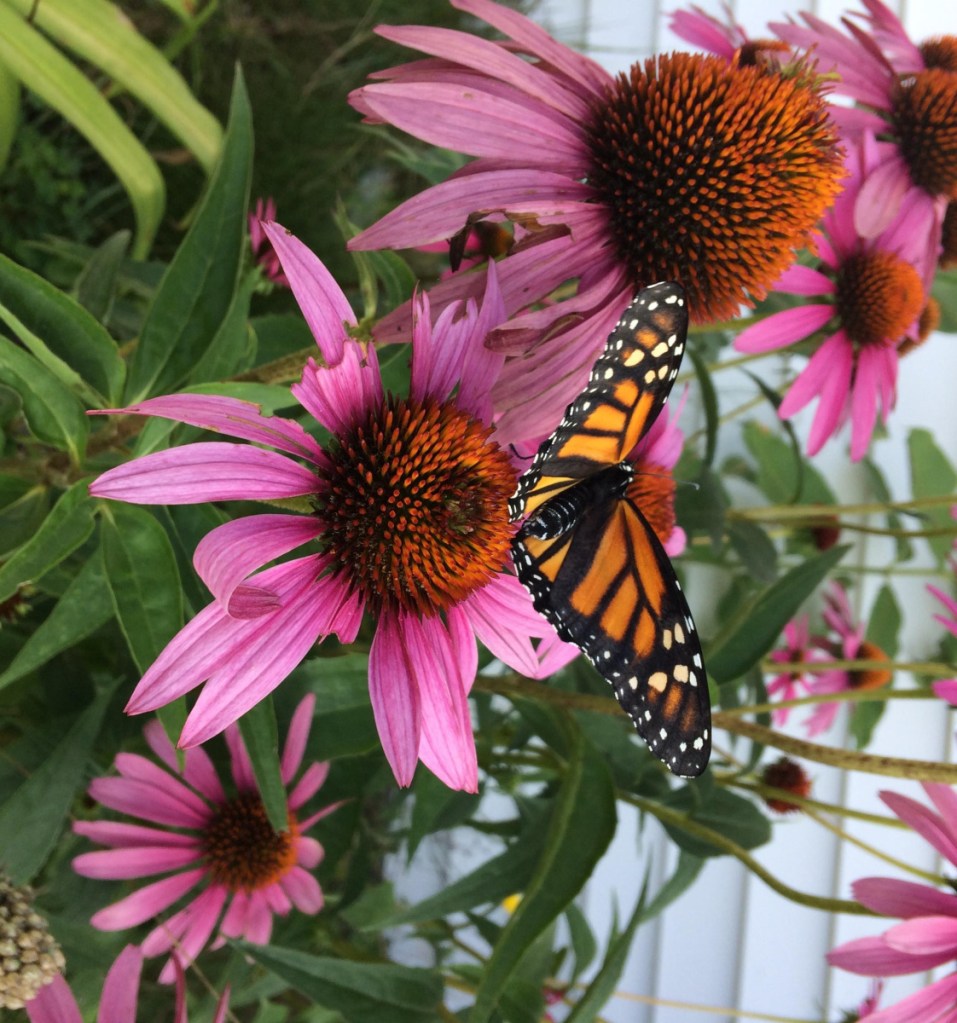
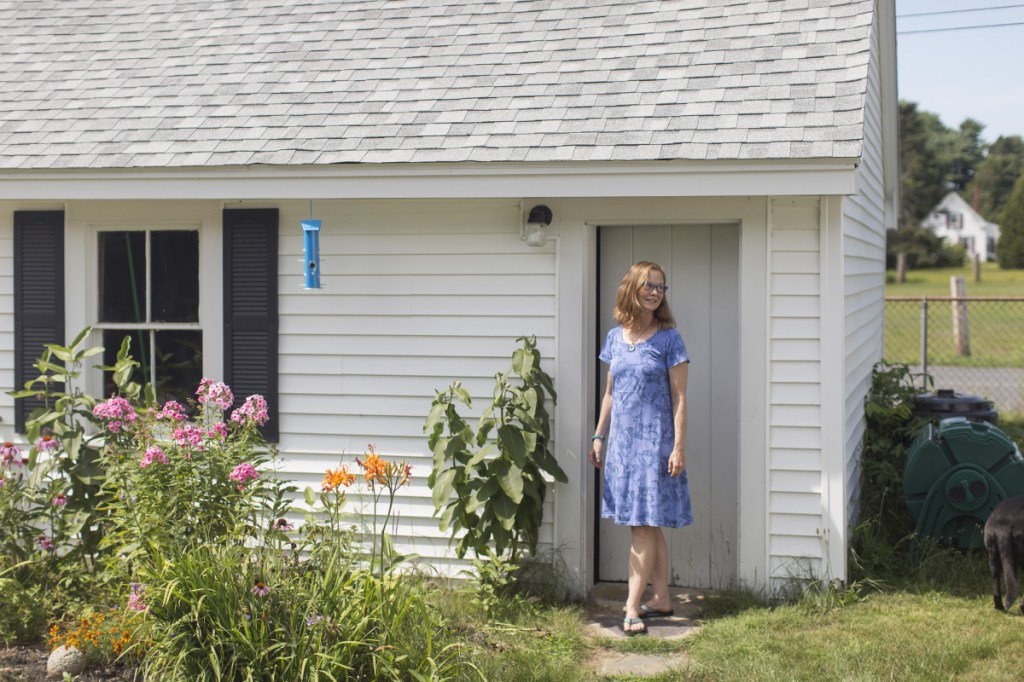
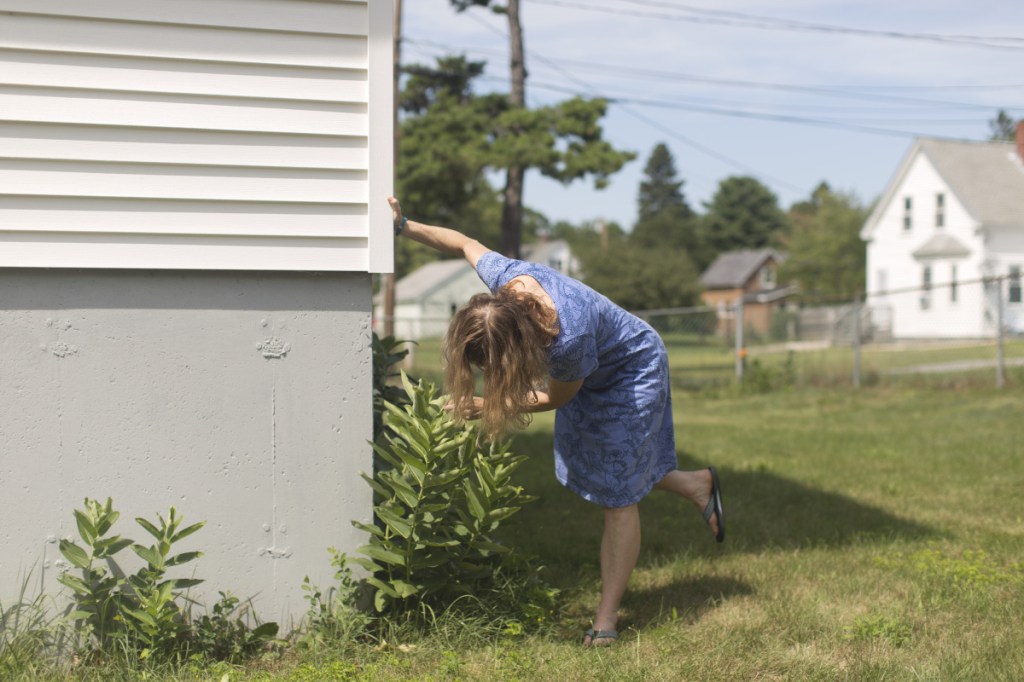
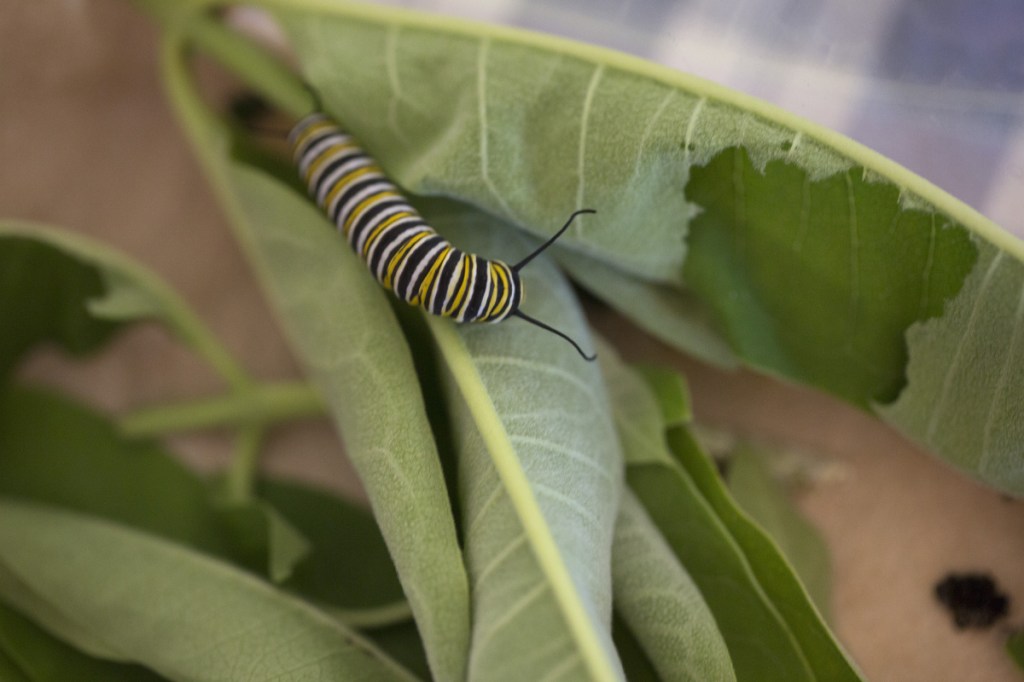

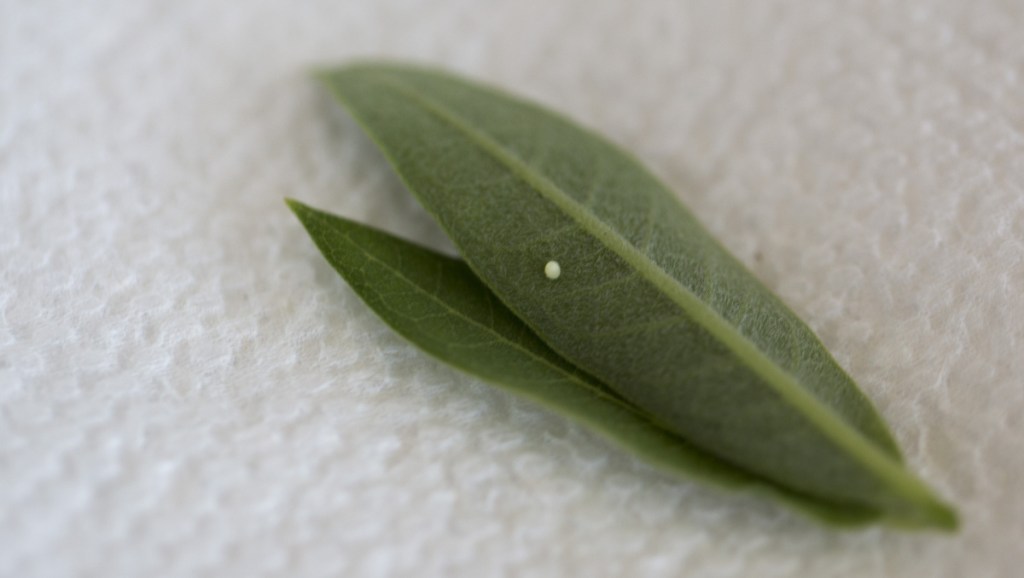
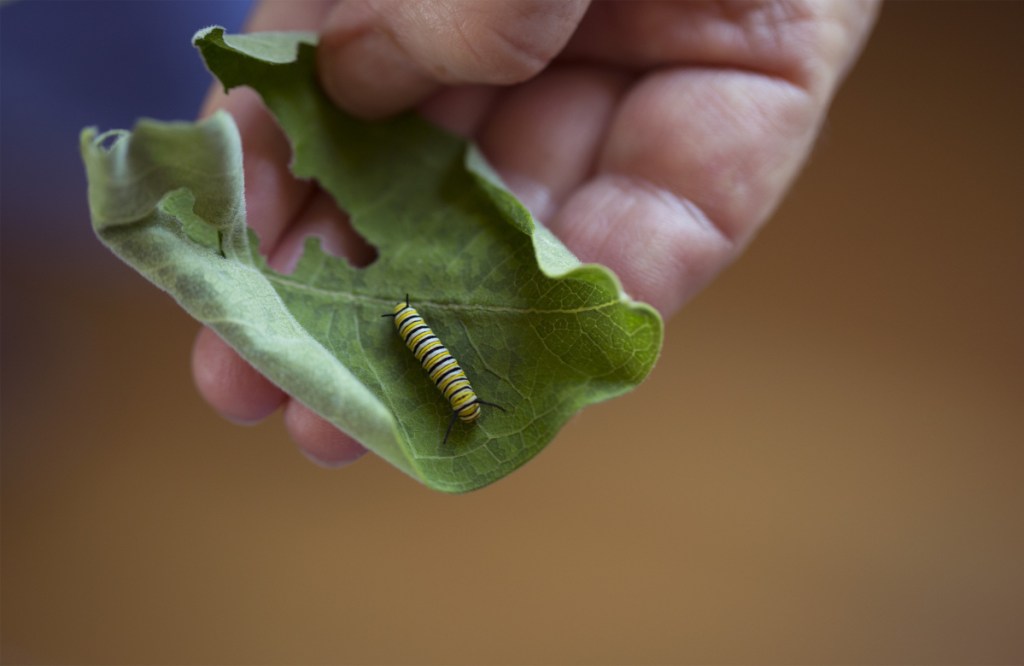

Success. Please wait for the page to reload. If the page does not reload within 5 seconds, please refresh the page.
Enter your email and password to access comments.
Hi, to comment on stories you must . This profile is in addition to your subscription and website login.
Already have a commenting profile? .
Invalid username/password.
Please check your email to confirm and complete your registration.
Only subscribers are eligible to post comments. Please subscribe or login first for digital access. Here’s why.
Use the form below to reset your password. When you've submitted your account email, we will send an email with a reset code.